News新闻资讯
Company News
DEVELOPMENT PROSPECTS OF THE NONWOVEN INDUSTRY
January 12,2021 By Changda Textile Views:
Industrial textiles are a strategic choice for my country’s textile industry to transform from a big country to a strong one. During the “Twelfth Five-Year Plan” period, my country’s industrial textile industry has developed rapidly, the scale of the industry has grown rapidly, economic benefits have continued to improve, technological progress has achieved remarkable results, key sub-sectors have grown rapidly, and application areas have continued to expand. The industry has taken up the important task of the new economic growth pole of my country’s textile industry, and has become one of the important directions and main ways of the textile industry’s transformation、upgrading and structural adjustment. It has gradually become a component of the national strategic emerging industries and a diversified high-tech industry spanning many fields. From the perspective of the global market, the United States, Europe, Japan and other developed countries and regions will continue to maintain steady growth in demand for high-end industrial textiles such as medical and health, structural enhancement, and safety protection.
During the “Thirteenth Five-Year Plan” period, in order to meet market demand, improve the level of differentiation, functionalization and green development of industrial textiles. My country will vigorously develop high-tech and high value-added industrial textiles, accelerate the application of new materials, new technologies, new processes, and new equipment, and support the development of advanced composite materials, implantable medical textile materials, high-end safety protection materials, and smart textile materials with a batch of high-end industrial textiles with high technological content, superior performance and high added value. These textiles are mainly used in the medical and health industry, supporting industries for infrastructure construction, emergency and public safety industries, environmental protection industries, strategic new materials industries, and “military-civilian integration” and other related industries,with a very wide application prospect in the future.
The development direction of non-woven fabrics is to replace textiles and knitwear. Non-woven fabrics have become the most potential field for competition with the textile market due to their similar textile characteristics, excellent physical properties, and high quality and low price.In recent years, the growth rate of world demand for non-woven fabrics has always been higher than that of the global economy. The global non-woven fabric production is mainly concentrated in China, accounting for 44% of the world’s total. Among the terminal applications of non-woven fabrics, hygienic absorbents (especially diapers) have the fastest growth, and the medical textiles, automotive textiles, footwear and artificial leather markets are also showing a new trend of rapid development.As the consumption of non-woven fabrics is in a period of rapid growth, China’s non-woven fabric industry is developing very rapidly.The development speed of non-woven products is much faster than the average development speed of the textile industry, with a high growth rate of 8-10% per year, which is the fastest developing industry in the textile industry.Because China’s non-woven fabric industry has moved towards high-end, many companies and products have strong international competitiveness. And through years of exploration and development, China’s non-woven fabric enterprises have come out with their own characteristics. For a period of time in the future, China’s non-woven fabric industry will focus on adjusting the variety structure, improving the grade, and transforming to diversification, serialization, specialization and high performance. In the next ten years, the demand for non-woven fabrics in various application industries will continue to increase, and segmentation, functionalization and industrialization will become the direction of technical research and development of non-woven fabrics.
During the “Thirteenth Five-Year Plan” period, in order to meet market demand, improve the level of differentiation, functionalization and green development of industrial textiles. My country will vigorously develop high-tech and high value-added industrial textiles, accelerate the application of new materials, new technologies, new processes, and new equipment, and support the development of advanced composite materials, implantable medical textile materials, high-end safety protection materials, and smart textile materials with a batch of high-end industrial textiles with high technological content, superior performance and high added value. These textiles are mainly used in the medical and health industry, supporting industries for infrastructure construction, emergency and public safety industries, environmental protection industries, strategic new materials industries, and “military-civilian integration” and other related industries,with a very wide application prospect in the future.
The development direction of non-woven fabrics is to replace textiles and knitwear. Non-woven fabrics have become the most potential field for competition with the textile market due to their similar textile characteristics, excellent physical properties, and high quality and low price.In recent years, the growth rate of world demand for non-woven fabrics has always been higher than that of the global economy. The global non-woven fabric production is mainly concentrated in China, accounting for 44% of the world’s total. Among the terminal applications of non-woven fabrics, hygienic absorbents (especially diapers) have the fastest growth, and the medical textiles, automotive textiles, footwear and artificial leather markets are also showing a new trend of rapid development.As the consumption of non-woven fabrics is in a period of rapid growth, China’s non-woven fabric industry is developing very rapidly.The development speed of non-woven products is much faster than the average development speed of the textile industry, with a high growth rate of 8-10% per year, which is the fastest developing industry in the textile industry.Because China’s non-woven fabric industry has moved towards high-end, many companies and products have strong international competitiveness. And through years of exploration and development, China’s non-woven fabric enterprises have come out with their own characteristics. For a period of time in the future, China’s non-woven fabric industry will focus on adjusting the variety structure, improving the grade, and transforming to diversification, serialization, specialization and high performance. In the next ten years, the demand for non-woven fabrics in various application industries will continue to increase, and segmentation, functionalization and industrialization will become the direction of technical research and development of non-woven fabrics.

 lang
lang
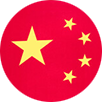
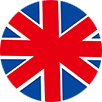
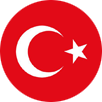
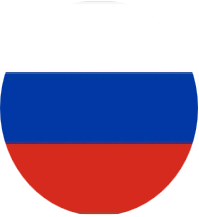
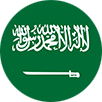
 ADDRESS:No. 1 Huatong Road, Development Zone, Chengguan Town, Taihe County, Fuyang City, Anhui Province, China.
ADDRESS:No. 1 Huatong Road, Development Zone, Chengguan Town, Taihe County, Fuyang City, Anhui Province, China. CALL US ON:+9053 9384 7765
CALL US ON:+9053 9384 7765 MAIL US:seles@sinochanda.com
MAIL US:seles@sinochanda.com